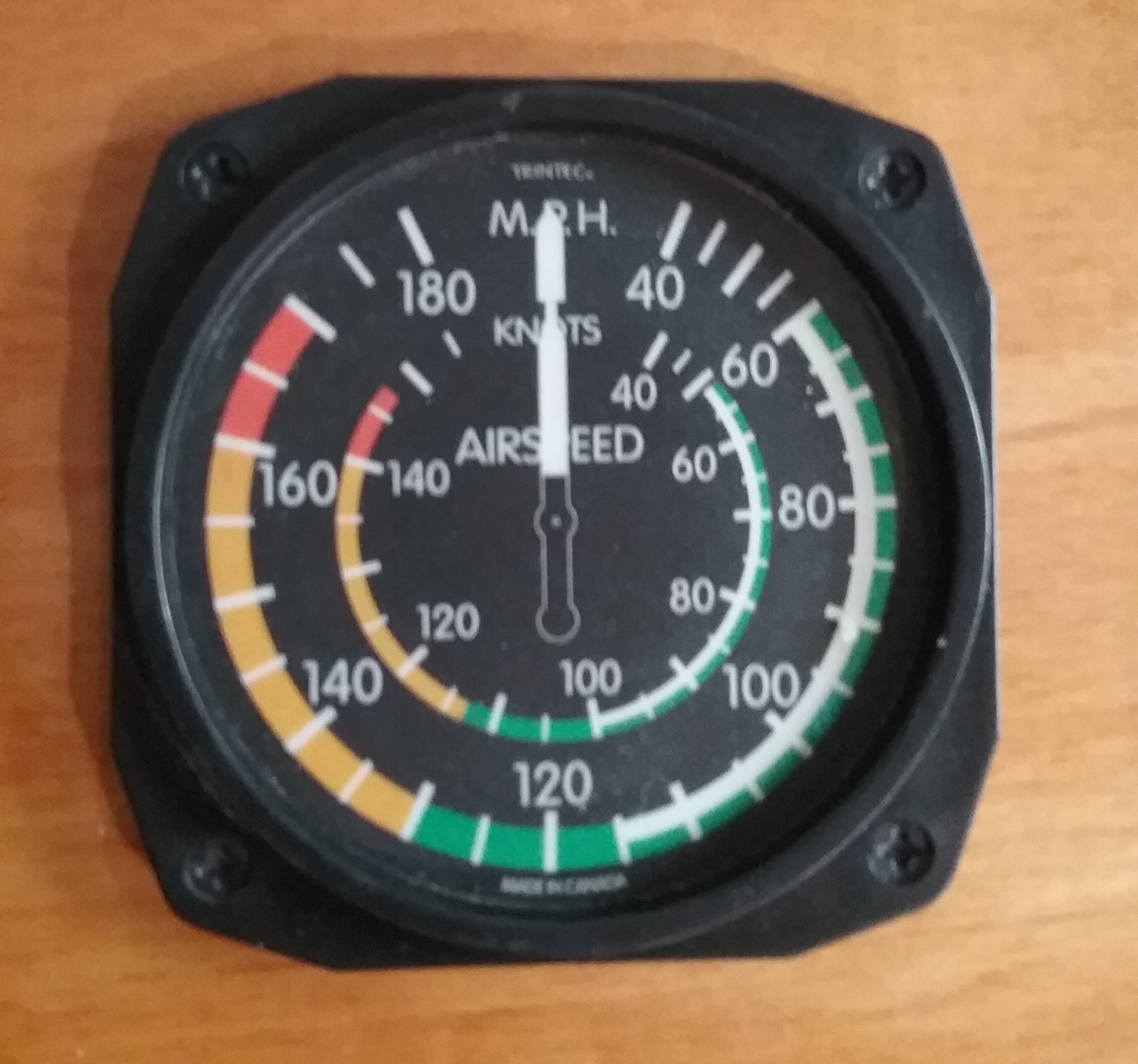“High speed, low drag” is a military phrase, but applies well to general aviation. Just for fun, I’m going to use my coaster set which features old-school “steam gauges” to illustrate the Airspeed Indicator.

The Airspeed Indicator functions on the difference in pressure between the static port (a flat round plate with some holes) on the aircraft and the pitot tube (pronounced PEE Toe) which faces forward. The faster the air molecules hit, the faster the aircraft is going, which is depicted as indicated airspeed. However, since air density depends on temperature and altitude (thinner air way high, or when it’s hot), that can affect the true airspeed. The normal operating airspeed is indicated in green on the gauge, in knots (1.15 mph) and miles per hour. The more you open up the throttle, the faster you go up to a point. A tail wind can make a huge difference, too.
The white arc shows the normal “flap operating range” and thus the typical speeds for approaches and landings.
The yellow arc indicates speeds that are safe in smooth air only. Try them in turbulent, rough air, and you’ll risk damage to the aircraft.
The red line indicates speeds at which the operator risks structural damage or failure.
Do any of these indicate stall speeds? Not really–an airplane can stall at any speed, depending on the pitch/angle of attack.
One thing that’s important pre-flight is to inspect the static port and the pitot tubes. If these are blocked with ice, covers, debris, wasp nests, etc. they can lead to inaccurate airspeeds, making it harder to judge safe landing and takeoff speeds. It’s a touch of realism, for my aviator to do a pre-flight inspection in my WIP.
See you next time!
Recent Comments